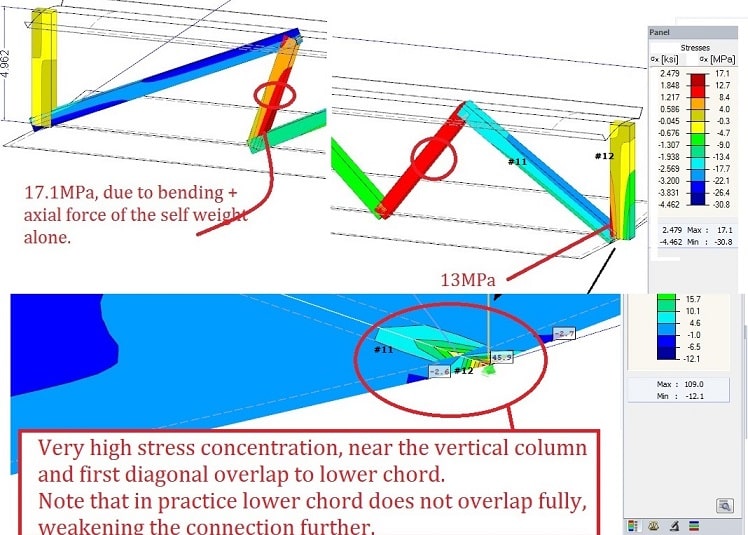I really have a hard time seeing the Florida DOT's exposure on this project. Maybe they have a public perception concern or a political concern but unless there is some flaw in their assessment of FIU as an acceptable participant in the Local Agency Program, or there are emails and the like that express concern for the performance of FIU, FIGG and/or MCM or any of the other parties, I just don't see where the FDOT bears much blame. There are so many politicians involved, it may just be they've been told to circle the wagons.
The bridge could just as easily have been a City of Sweetwater project as opposed to FIU. Just like FIU, the City of Sweetwater would have had to apply via the Local Agency Program. The federal statutes state that State Transportation Departments have to maintain chief responsibility for the project but when you read further, it demonstrates how that responsibility is maintained while being delegated to DOT certified contracting entities. So when you look at who was responsible for preforming the design review in lieu of the FDOT, that was Louis Berger. When you look at who was responsible for inspections in lieu of the FDOT, that was the CEI - Bolton, Perez & Associates. This is how the Local Agency Program works, participants can contract out the functions they don't have the expertise to provide. Just like a Municipal Building Dept. may contract out engineering reviews to a private firm. In this sense the FDOT followed the statutes regarding the FHWA & Local Agency Programs. Ultimately, what the federal statues really only require that the State DOTs maintain control of the purse. They can't outsource the oversight to a private firm. The FDOT's role in LAP projects is very much like a Building Dept. that contracts out the engineering & inspection work to private firms. They merely perform the administration, making sure that the work has been reviewed and accepted by the parties charged with these responsibilities.
It would be interesting to know what time of day Denny Pate contacted Tom at the Florida DOT on the 13th, was it before or after the photos were taken. Assuming Tom is the Chief Engineer for FDOT assigned to the project, Tom..., who? Who took the photos? I assume it was a Bolton, Perez & Associates, inspector.
Bolton, Perez & Associates was under contract to FIU, not to FIGG or MCM. What communication structure existed? One would assume any communications by Bolton, Perez & Associates to FIU would automatically be communicated to FIGG & MCM. Rafeal Urdaneta, a Bolton Perez & Associates employee is the one who contacted Alfredo Reyna, the FDOT's Assistant LAP Coordinator notifying him on the 14th of the meeting, the following day. A Bolton, Perez & Associates Newsletter in the Summer of 2015, reports him as a new hire to their CEI team stating, Mr. Urdaneta has over 27 years of experience in civil engineering construction management projects. His experience in public and private projects include: roadways, utilities, wastewater facilities, stormwater and drainage systems, water distribution, high-rise buildings, petroleum platforms, subdivisions and medical centers. Rafeal Urdaneta isn't on the Florida Licensed Professional registry. Assuming Rafeal Urdaneta was the day-to-day on-site inspector for Bolton, Perez & Associates, is there a point that Bolton, Perez & Associates had the responsibility to send a qualified Licensed Engineer to the job site? They were after all, as the FDOT certified CEI, responsible for being the FDOT's eyes on the project.
Alfredo Reyna, the FDOT's Assistant LAP Coordinator, is a Licensed Engineer, yet he states when he attended the meeting on the 15th, which occurred shortly before the bridge failure and collapse that he was not notified of any life-safety issue. It doesn't seem possible that there wasn't any discussion of the cracks, unless he wasn't present for the whole meeting or the matter was discussed separate from the meeting. Alfredo Reyna's job as FDOT's Assistant LAP Coordinator, was to make sure that the money was being spent on work & materials approved by the program & that any changes were applicable for LAP funds or out of program. For instance, he was responsible for determining if the cost of relocating the bridge pylon from the roadway to the canal position fell within the LAP/Tiger Program funding. Essentially his role was as a Civil Works Program examiner. The project inspection criteria for his job is almost entirely based on administrative review of process flow. His attendance at meetings is to determine whether work discussed falls within the program and that the project is meeting the funding timeline.
Assuming my characterization of Bolton, Perez & Associates is accurate, did they not have a responsibility independent of FIGG to determine if the bridge was a hazard to the public? There presence on the canopy at the time of collapses, suggests they were performing the kind of special inspection work often called out by Building Depts. but were they doing the work that the FDOT designates as the CEI responsibility in lieu of FDOT inspections? It is troubling that at the time of the collapse there should have been two people on-site that knew, they needed to abort what they were doing, one was the Bolton, Perez & Associates staffer and the other should have been one of the Structural Technologies staff.


![[smile] [smile] [smile]](/data/assets/smilies/smile.gif)